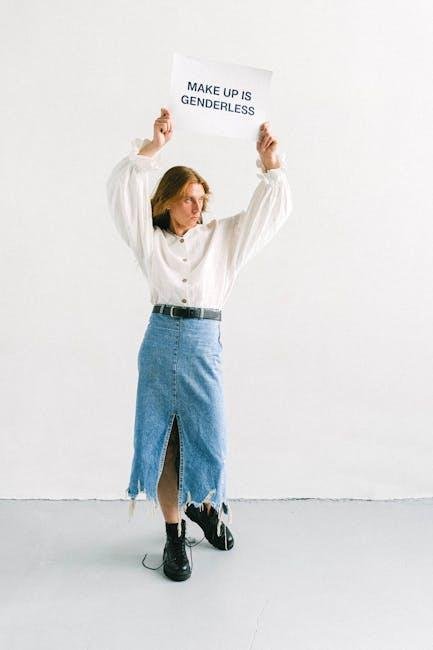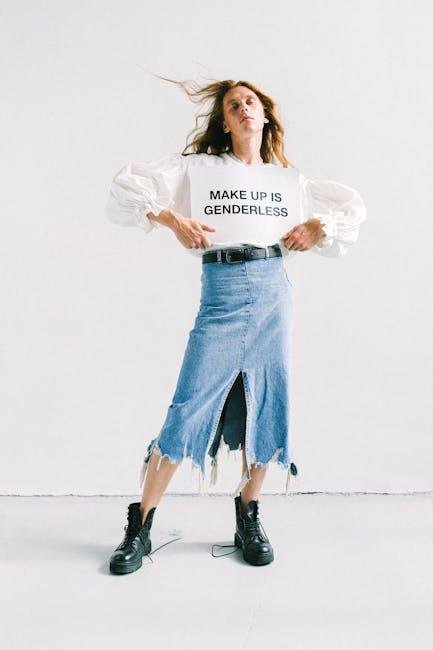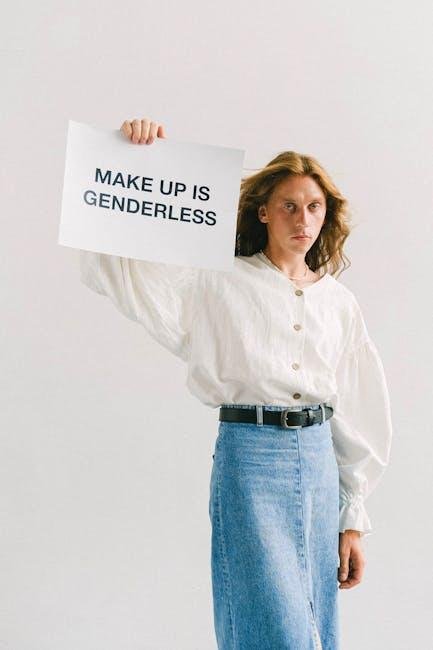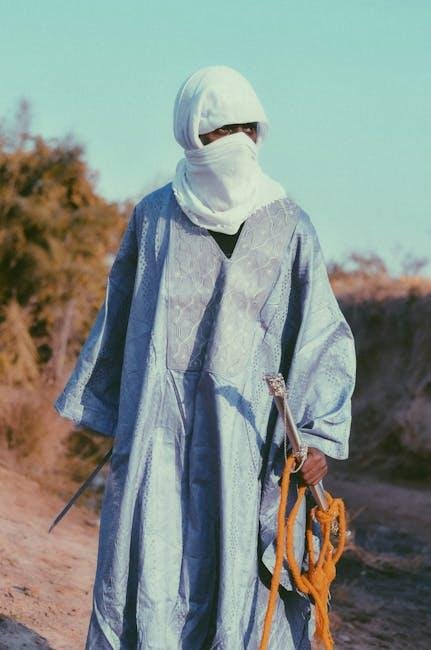The Rise of Genderless Fashion on the Runway
In a world where boundaries are increasingly blurred, fashion is once again at the forefront of cultural evolution, pioneering a fearless exploration of identity and expression.The concept of genderless fashion—freed from the constraints of the traditional binary—has emerged as a bold statement on runways across the globe. Designers are embracing a vision of inclusivity that transcends labels, inviting the audience to rethink not just what they wear, but how they perceive themselves and others. With garments that celebrate the fluidity of human experience,this movement challenges age-old conventions,sparking conversations about genre,identity,and personal style. As we delve into the phenomenon of genderless fashion’s rise on the runway, we uncover the innovative minds shaping this transformative landscape, the cultural dialogues it ignites, and the promise it holds for a more equitable fashion future.
The Evolution of Genderless Fashion: A Historical Perspective
The journey of fashion has been punctuated by shifts in societal attitudes towards gender roles and identity, spawning a burgeoning movement towards genderless fashion. This transition can be traced back to the early 20th century, when designers like Coco Chanel began challenging traditional norms by introducing more masculine elements into women’s wear.The 1970s marked another pivotal moment, as the unisex fashion trend emerged, heralded by styles that were both practical and resistant to rigid gender classifications. Brands such as Yves Saint Laurent and Jean paul Gaultier blurred the lines with collections that showcased tailored suits for women and soft silhouettes for men, establishing a foundation for future innovations in the realm of gender expression.
Fast forward to the 21st century,where the runway has become a stage for a growing number of designers who embrace the fluidity of gender in their creations. This inclusivity has been amplified by cultural icons and movements advocating for representation and diversity. Major fashion weeks are now showcasing collections by visionaries such as Jared Leto and Palomo Spain, who present collections that defy conventional gender categorization. Here are some notable features of contemporary genderless fashion:
- Neutral color palettes: Emphasizing shades that suit any gender.
- Innovative silhouettes: Clothing that prioritizes comfort over conformist structures.
- Inclusive sizing: Aiming for diversity in body representation.
- Gender-neutral marketing: Campaigns focusing on personal expression rather than gender binaries.

Breaking Boundaries: Key Designers Leading the genderless Movement
The emergence of genderless fashion reflects a broader cultural shift towards inclusivity and self-expression. Designers are steering away from traditional categories, creating collections that embrace a spectrum of identities.This movement is evidenced by prominent figures such as:
- Junya Watanabe: Famed for innovative silhouettes that blur the lines between masculine and feminine.
- RICK OWENS: Renowned for dark aesthetics and deconstructed styles that challenge societal norms.
- Rad Hourani: Celebrated for his unisex designs that empower individuals nonetheless of gender.
These visionaries are making significant strides on runways worldwide, redefining beauty and creating spaces where everyone can find representation. Their work not only emphasizes the freedom of choice in fashion but also encourages a dialog around gender expression.An essential aspect of this dialogue is centered on the versatility of clothing, as seen in collections crafted with features such as:
| Design Feature | Description |
|---|---|
| Fluid Silhouettes | Designed to suit various body shapes, transcending traditional gender cuts. |
| Neutral Palettes | Colors that appeal to all, promoting a sense of unity and accessibility. |
| Layering Essentials | Pieces that can be worn together or separately, enhancing personalization. |

sustainability Meets Inclusivity: the Environmental Impact of Genderless Fashion
The emergence of genderless fashion is reshaping the landscape of the fashion industry, promoting not only inclusivity but also sustainability. This revolutionary approach to clothing design allows individuals to express themselves without the constraints of traditional gender norms. By adopting a gender-neutral ethos, brands are able to minimize waste and create versatile collections that can be worn by anyone. The benefits of this paradigm shift extend far beyond personal expression:
- Reduction in Waste: fewer collections mean less overproduction.
- Durable Designs: Genderless pieces frequently enough prioritize quality, leading to longer-lasting wear.
- Broader Market Reach: Attracts a diverse customer base, fostering a sense of community.
Furthermore, when brands embrace genderless fashion, they contribute to a more ethical and sustainable future. This movement encourages the use of eco-friendly materials and innovative production techniques that lessen environmental impact. Designers are increasingly opting for:
| Material Type | Environmental Benefit |
|---|---|
| Organic Cotton | Reduced pesticide use |
| Recycled Polyester | Less plastic waste |
| Tencel | Biodegradable and sustainably sourced |
By focusing on these sustainable materials,genderless fashion isn’t just a trend,but a pledge towards an eco-conscious future. The intersection of inclusivity and environmental stewardship paints a hopeful picture for the fashion landscape, one where everyone is invited to participate in the journey toward a more sustainable and harmonious world.

styling for All: Practical Tips for Embracing Genderless Wardrobes
Embracing a genderless wardrobe can feel like an exciting yet daunting endeavor, but unlocking its potential is all about versatility and personal expression. Start by integrating essential pieces that can be styled in multiple ways. Opt for oversized shirts in neutral tones, tailored trousers with fluid silhouettes, and layering essentials such as lightweight cardigans or bombers. Don’t hesitate to explore a mix of materials—denim, cotton, and even satin can coexist to create rich textures that elevate any look. Investing in statement accessories, like bold hats and unisex shoes, can tie your ensemble together, making it distinctly yours.
When building a gender-neutral wardrobe, focus on the principles of balance and cohesion. Experiment with colors and patterns while keeping your overall palette harmonious. For example, pairing vibrant hues with softer shades can create a visually pleasing effect. A great approach is to create a capsule wardrobe, where a few key pieces can be combined in various ways to yield ensemble diversity. Here’s a rapid table to illustrate possible outfit combinations:
| Base Item | Layer | Accessory |
|---|---|---|
| Oversized Shirt | Lightweight Jacket | Chunky Sneakers |
| Tailored trousers | cropped Sweatshirt | Crossbody Bag |
| Midi Dress | Denim Jacket | Wide-Brim Hat |
To Wrap It Up
As the curtains fall on this exploration of genderless fashion, it’s clear that the runway has evolved into a vibrant tapestry of expression and inclusivity. designers are breaking free from the traditional constraints of menswear and womenswear, inviting all to step into a world where clothing transcends gender boundaries. This paradigm shift not only challenges long-standing norms but also empowers individuals to express their identities without limitation.
The rise of genderless fashion is not merely a trend; it represents a cultural movement that champions diversity and celebrates the unique tapestry of human experience. As we look ahead, it’s evident that the conversation around fashion will continue to expand, inspiring new generations to embrace their authenticity. With each collection that graces the runway, we inch closer to a future where fashion is truly for everyone—an endless canvas upon which to paint our stories, unbound by the labels of yesterday. In this unfolding narrative, the fabric of society grows richer, colorful, and far more inclusive, inviting us all to participate in this exciting evolution.



